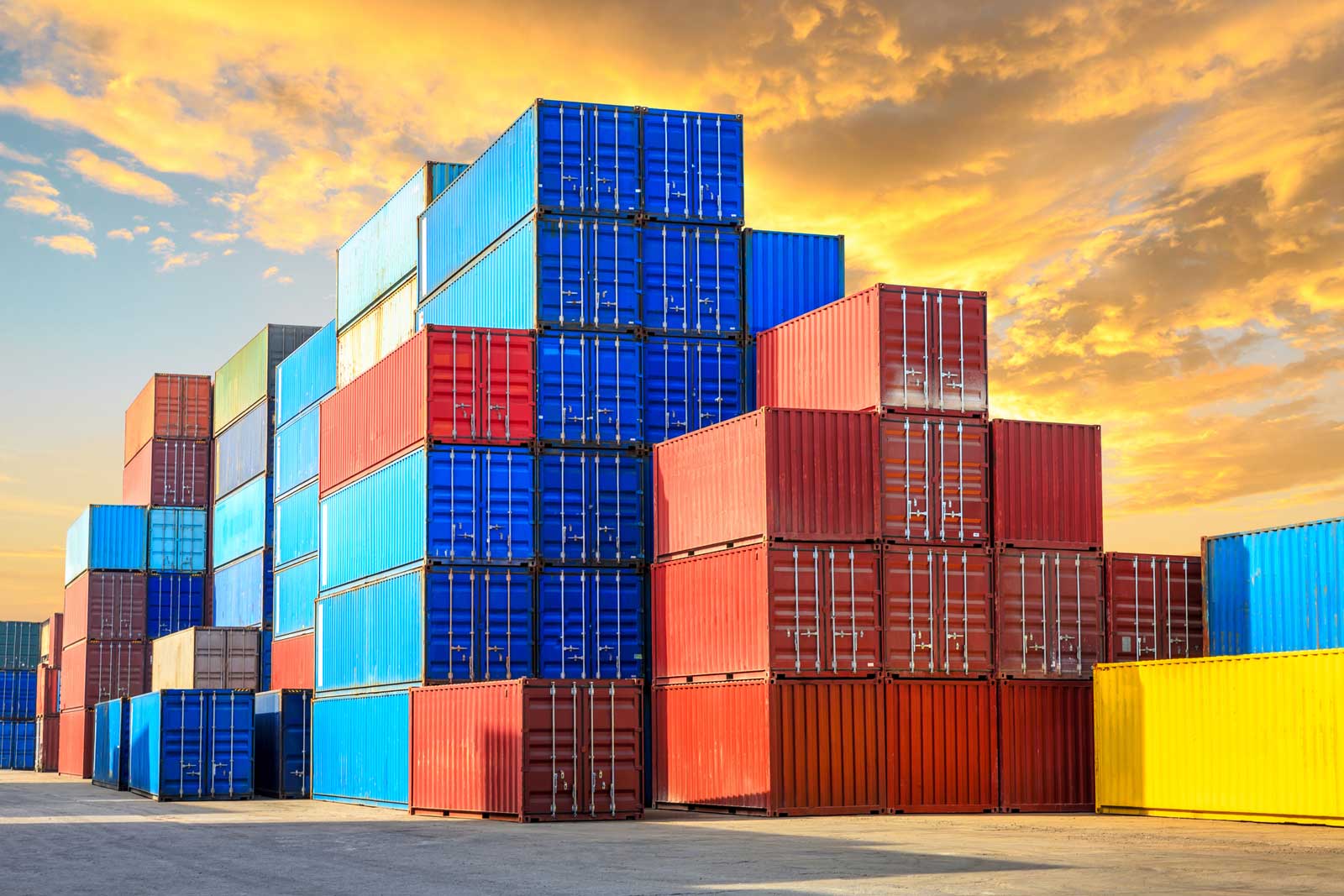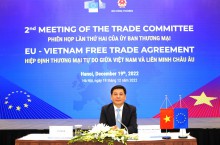The News
EVFTA commitments on import and export of goods between Vietnam and Germany
As a new-generation, high-standard Free Trade Agreement (FTA), the EVFTA has a wide scope of regulation, with commitments in many fields. This section introduces the EVFTA commitments related to or affecting the export and import of goods between Vietnam and the EU, including Germany.
As a new-generation, high-standard Free Trade Agreement (FTA), the EVFTA has a wide scope of regulation, with commitments in many fields. This section introduces the EVFTA commitments related to or affecting the export and import of goods between Vietnam and the EU, including Germany.
These commitments include a group of direct commitments on trade in goods (mentioned in Chapters 2 to 7 of the EVFTA Document) and a number of commitments in other areas such as intellectual property, public procurement, services, investment, and sustainable development... have indirect impacts on production and import-export activities between the two Parties. Note that in the EVFTA, the EU with 27 member countries is a unified Party. Therefore, with the exception of a few cases where there are separate commitments for each EU member state (e.g. geographical indications, opening the public procurement market, opening the EU’s investment services market). All EU commitments in EVFTA are unified commitments of all EU member states, including Germany. Therefore, in the EVFTA, except for specific cases, all commitments made by the EU to Vietnam are also commitments made by Germany to Vietnam, and vice versa, Vietnam's commitments to the EU are also commitments for Germany, according to the WTO Center.
Commitment on import tax
Similar to Vietnam, in the EVFTA, the EU has a commitment to specific preferential import tariffs for each tariff line, according to which the EU (including Germany) will eliminate import taxes for most Vietnamese goods right after. When the Agreement comes into effect (August 1, 2020), the remainder will eliminate tariffs according to the schedule or apply tariff quotas. Specifically, Germany's EVFTA preferential tariffs for products imported from Vietnam are as follows: As of August 1, 2020, when the EVFTA takes effect: eliminating tariffs on 85.6% of tariff lines; As of January 1, 2027, tariffs will be eliminated for a total of 99.2% of tariff lines; For about 0.8% of the remaining tariff lines, a tariff quota will be applied with the import tax within the quota of 0%. The products of Vietnam eligible for quotas under the EVFTA are: Poultry eggs and egg yolks; garlic; sweet corn; milled rice; milled rice; milled rice meets the requirements of the right type; Tapioca; tuna; surimi; sugar and other products containing high sugar content; special lines; mushroom; ethanol; and mannitol, sorbitol, dextrin and other modified starches.

Note that the quota allocation mechanism for Vietnam under the EVFTA will be regulated by the EU for the whole EU territory for each specific product/product group. Therefore, there will be no separate quota for the German market for any product. Until EVFTA, the EU had no FTA with Vietnam. Therefore, in principle, Vietnamese goods imported into Germany - an EU member must be subject to the MFN tax rate that the EU applies to WTO member countries. However, for many years now, the EU (including Germany) has been maintaining the Generalized Tariff Preferences (GSP) mechanism for developing and least-developed countries, including Vietnam. Under this mechanism, many export products, especially key export products of Vietnam such as garments, footwear, seafood, etc., are subject to GSP and enjoy preferential tax rates significantly lower than the tax rate. MFN when imported into the German market (in 2021, the EU's average MFN tax rate is 4.71%, and the average GSP tax is 2.35%). However, the EU has a "maturity threshold" for countries/products eligible for GSP. This provision is simply understood that when Vietnam's total national income or export turnover of a certain commodity reaches a certain threshold, it is no longer entitled to GSP incentives.
Up to now, the GSP tax rate that the EU unilaterally gives Vietnam is relatively low. In the comparison at the early stage of EVFTA implementation, some export products have a long tariff elimination roadmap (5-7 years), so the EVFTA tariff applied to these products may be higher than the GSP tariff currently enjoyed by that product. However, overall, in the EVFTA, the EU commits to eliminate up to 85.6% of tariff lines as soon as the Agreement comes into effect and 99.2% of tariff lines will be eliminated after 7 years. Thus, by the end of the roadmap, almost all of Vietnam's exports to the EU (including Germany) will be completely eliminated, while GSP only has incentives for some product groups and the offer level is not always 0%. Therefore, in the long run, compared to the GSP, the EVFTA tariff will be more beneficial for businesses. (See Business Handbook - Exploiting the EVFTA to import and export goods between Vietnam and Germany)
Note to businesses: According to EU regulations on GSP when there is an FTA, Vietnam will continue to enjoy the GSP mechanism in parallel with the EVFTA for a period of 2 years from the date the EVFTA comes into effect (i.e. until the end of May 31, 2022). At the same time, according to the provisions of the EVFTA, the EVFTA preferential tax rate applied to Vietnamese goods will not be higher than the tax rates that the EU applies to such goods at the time immediately before the EVFTA takes effect. This means: During the period from August 1, 2020 to July 31, 2022: Enterprises can choose to use EVFTA or GSP depending on which preferential tariff mechanism is beneficial to businesses. In case of choosing GSP preference, the product must meet GSP's rules and procedures for certification of origin; In case of choosing tariff preferences under EVFTA, products must meet EVFTA rules and procedures for certification of origin. From August 1, 2022: The GSP preferential tariff regime will automatically end, businesses will apply the preferential tariff regime under the EVFTA. However, the EVFTA allows in case the EVFTA tax is higher than the GSP tax, they will still be entitled to GSP tax. No matter which preferential tax rate is chosen, the product must meet the EVFTA rules and procedures for certification of origin. This is a flexible commitment, which is very beneficial for Vietnamese businesses when exporting to the EU because it is guaranteed that the applicable EVFTA tax rate will always be lower or at least equal to the GSP tax rate at the time. August 1, 2020.
Commitment on export tax
In the WTO, despite its commitment to eliminate export taxes, Vietnam still reserves the right to continue to impose export taxes on a list of 603 items. In the EVFTA, Vietnam commits to further reduce this list of 603 export tax lines reserved under the WTO. Specifically, Vietnam commits to: Maintain the current 0% tax rate for 134 tax lines; Eliminate export tax for 412 tariff lines after a period of time (route 5, 7, 10, 12 or 15 years depending on tax lines); Export tax is reserved for 57 tariff lines, including products such as sand, shale, granite, some types of ores and concentrates, crude oil, coal, coke, gold, etc. In which, export tax is limited at 20% for 56 tax lines after 5 years, especially for manganese ore, the limit is 10%.
Note to businesses: The commitment level in Vietnam's import tax commitments is only the minimum reduction. In fact, Vietnam can cut and remove tariffs stronger and sooner for EU goods. Similarly, with the commitment on export tax, Vietnam has the right to apply reservations in the Agreement, but in fact can choose not to impose export tax or to impose a lower tax. Therefore, in order to know the actual applied preferential tariff rate of EVFTA, enterprises need to look up the Decree on Vietnam's Special Preferential Import and Export Tariffs under EVFTA. When the EVFTA came into effect, Vietnam issued a special preferential import and export tariff schedule for the implementation of the EVFTA Agreement for the period of 2020 - 2022 in Decree No. 111/2020/ND-CP dated September 18, 2020 of the Government. Enterprises can look up the EVFTA tariff rate applicable to their import and export goods in this document.

-cr-220x145.jfif)


